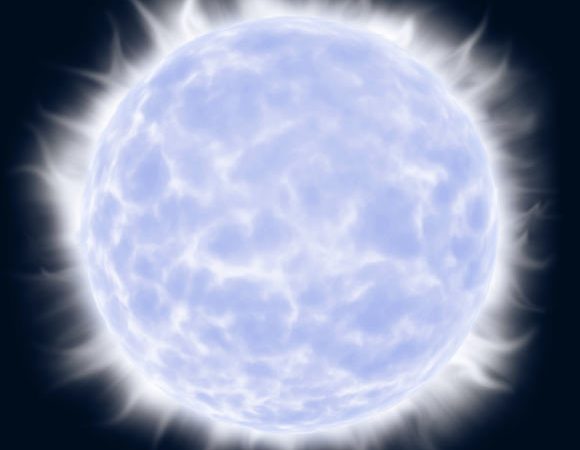Astronomers using data from NASA’s Fermi Gamma-ray Space Telescope have identified 14 candidate antistars — stars made of antimatter — in our Milky Way Galaxy.
Source: Sci News
“We generally take it for granted that equal amounts of matter and antimatter were produced in the Big Bang, yet the observable Universe seems to contain only negligible quantities of antimatter,” said Simon Dupourque from the University of Toulouse’s Institute for Research in Astrophysics and Planetology and colleagues.
“Baryonic antimatter in our Solar and Galactic neighborhood can be constrained by the observation of high-energy gamma rays.”
“When coming into contact with normal matter, it would produce annihilation radiation featuring a characteristic spectrum peaking around half the mass of the neutral pion and with a cutoff around the mass of the proton.”
“The non-detection of this annihilation feature in gamma rays has virtually excluded the existence of substantial amounts of baryonic antimatter in the Solar System, the Solar neighborhood, the Milky Way, and up to the scale of galaxy clusters.”
This has been recently challenged by the detection of a few antihelium nuclei by the Alpha Magnetic Spectrometer experiment (AMS-02) on the International Space Station.
“AMS-02 measures roughly one antihelium in a hundred million helium,” the researchers explained.
“Amongst the eight antihelium events reported, six are compatible with being antihelium-3 and two with antihelium-4.”
“Several authors had pointed out that ‘the detection of a single antihelium […] would be a smoking gun […] for the existence of antistars and of antigalaxies’.”
In the new study, the scientists analyzed data from the gamma-ray source catalog (4FGL-DR2) produced by the Fermi Large Area Telescope (LAT).
“4FGL-DR2 is based on 10 years of observations with the LAT in the energy range from 50 MeV to 1 TeV,” they said.
“It contains 5,787 gamma-ray sources with their spectral parameters, spectral energy distributions, light curves, and multiwavelength associations.”
Positions and energy flux in the 100 MeV-100 GeV range of antistar candidates selected in 4FGL-DR2. The background image shows the Fermi 5-year all-sky photon counts above 1 GeV. Image credit: NASA / DOE / Fermi LAT Collaboration / Dupourqué et al., doi: 10.1103/PhysRevD.103.083016.
They were able to isolate 14 candidate stars whose properties were spectrally compatible with the expected signal from matter-antimatter annihilation.
“However, the nature of these sources is still uncertain. It is much more likely that they are actually other types of well-established gamma-ray emitters, such as pulsars or black holes,” they noted.
The authors also estimated that in our Milky Way Galaxy, there are 2.5 antistars per one million regular stars.
“The antistars more likely to be detected by the LAT lie at distances between a few tens of parsecs to 1,000 parsecs, and therefore could be the same antistars producing the antihelium nuclei tentatively detected by AMS-02,” they said.
“However, translating quantitatively the constraints on the antistar populations to the processes at on origin of the AMS-02 antihelium would require making hypotheses on the mechanisms that eject and accelerate antinuclei from antistars.”
A paper describing the findings was published in the journal Physical Review D.
Source: Sci News

































Leave a Comment
You must be logged in to post a comment.